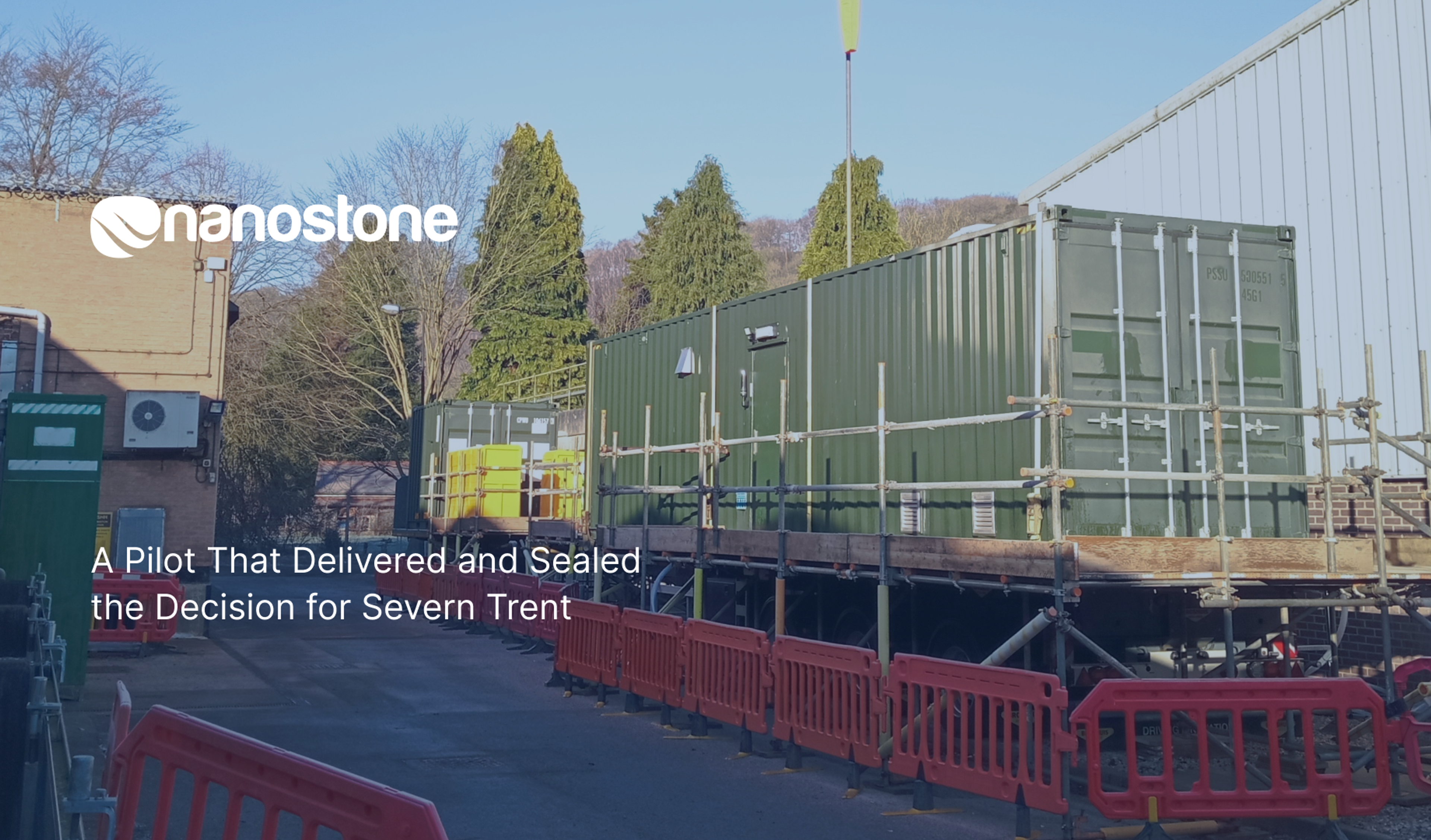Severn Trent Chooses Nanostone Ceramic UF to Future-Proof Homesford WTW
Nanostone’s ceramic ultrafiltration membranes will add 20 MLD of capacity and significantly enhance permeate water quality at Homesford WTW.
July 24, 2025

1. From Mine Outfall to Modern Utility
The Homesford Water Treatment Works in Derbyshire treats raw water from Meerbrook Sough, an underground channel fed by an abandoned lead mine. Elevated lead levels, tight space constraints, and strict water recovery requirements make this source a challenge for conventional treatment technologies.
Conventional polymeric membranes at Homesford were trapped in an expensive catch-22: the ferric-sulphate dose that binds dissolved lead also attacks the polymer, dramatically shortening their lifespan.
Following an eight-month pilot in partnership with WatSTech, Severn Trent selected Nanostone’s CM-151™ ceramic ultrafiltration (CUF) to break that cycle and set a new benchmark in UK water treatment.
Nanostone’s ceramic membranes met all pilot success criteria, will significantly outperform polymeric membranes in durability, and come with a guaranteed 20-year membrane life.
2. Pilot-Proven Performance
The pilot demonstrated outstanding performance across key regulatory and operational dimensions:
Lead Removal
Achieved permeate lead levels with a wide safety margin, exceeding even the most conservative future regulatory limits and demonstrating reliable long-term compliance.
Pathogen Protection
Provided a robust ultrafiltration barrier, validated to consistently remove microbial contaminants including Cryptosporidium, bacteria, and protozoa to industry-leading standards.
Water Recovery
Pilot demonstrated near-total water recovery rates, well above what’s typically feasible with conventional membrane systems, resulting in less waste, lower residuals, and reduced energy and chemical consumption.
Cleaning Frequency
Demonstrated exceptionally long cleaning intervals under real-world conditions, translating into lower downtime and reduced operational cost—while maintaining stable performance throughout.
In summary: improved water quality, reduced waste, and lower operational burden—supported by a membrane built for long-term use.
Want to go deeper? A technical discussion with a Nanostone expert can walk you through the pilot setup, key operating conditions, and the performance data behind Homesford’s success.
3. Tackling Challenging Water
Ceramic membranes withstand the ferric sulphate dosing required to bind dissolved lead—a known failure point for polymeric systems. The result is stable, high-flux performance under aggressive conditions and a membrane lifespan measured in decades, not years or even months. Homesford will benefit from a durable, regulation-ready barrier that transforms a historically problematic mine outfall into a reliable treatment source.
4. Maximizing Limited Space
The same pilot confirmed something equally valuable: more water in the same footprint. Higher flux plus a rack-friendly design means the full-scale upgrade adds at least 45% capacity potential without requiring more space.
5. A Template for the UK & Beyond
Many UK works face the same mix of legacy metals, space constraints and decarbonisation targets. Nanostone’s inline-coagulation ceramic platform offers a drop-in retrofit that:
- Boosts capacity by 30–60 %
- Meets tomorrow’s lead, turbidity, and pathogen rules today
- Minimises lifecycle cost and carbon by extending membrane life and shrinking waste streams
6. Project Team
Client: Severn Trent
Technology Provider: Nanostone Water
Pilot Partner: WatSTech
Site: Homesford WTW, Derbyshire, UK